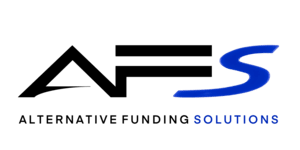Many businesses miss out on expansion opportunities simply because they don’t have fast access to capital. Whether it’s opening a new location, seizing a bulk inventory deal, or hiring staff for growth, waiting for a traditional loan can mean lost revenue. A revolving line of credit (LOC) offers the flexibility to move quickly, allowing you to seize business opportunities without long delays.
In this article, we will explore how a revolving LOC can fuel your business’s expansion, what benefits it provides, and when it’s the right tool for the job. We’ll also dive into the qualification process so you can better understand how to secure this type of financing for your business’s growth.
- Summary
- The article explores how a revolving line of credit (LOC) can help businesses expand by providing flexible, immediate access to capital.
- It highlights the benefits of using a LOC for growth, such as funding inventory purchases, opening new locations, and managing seasonal cash flow fluctuations.
- The article also discusses when to use a LOC, the qualification process, and real-world examples of businesses leveraging LOCs for expansion.
- Key Takeaways: A revolving LOC offers flexible, on-demand access to capital without the need for reapplying each time. It helps businesses scale quickly, manage seasonal cash flow, and seize time-sensitive growth opportunities. Qualification typically requires a solid business credit score, stable revenue, and a low debt-to-income ratio. Best used for scaling operations, handling cash flow gaps, and responding to market opportunities.
What is a Revolving Line of Credit?
A revolving line of credit = flexible financing. It provides access to a set credit limit that you can borrow, repay, and reuse as needed.
Unlike traditional loans, which offer a lump sum with fixed repayment terms, a revolving LOC works similarly to a credit card: you borrow what you need, pay it back, and can borrow again without reapplying.
Key Features of a Revolving LOC
- Credit Limit: The maximum amount you can borrow, set by the lender.
- Interest Rates: Generally lower than credit cards, varying depending on whether the LOC is secured or unsecured.
- Repayment Flexibility: Repayments can be made in installments, and funds become available again once repaid.
Why Use a Revolving Line of Credit for Business Expansion?
1. Flexibility and Access to Working Capital
A revolving line of credit provides the flexibility you need as your business grows. For instance, as demand for your products increases, you may need immediate cash flow for:
- Inventory Purchases: Stock up on inventory ahead of peak seasons.
- Expanding Locations: Cover upfront costs for leasing, renovations, or equipment when opening a new office or store.
This flexibility allows you to cover these expenses without applying for a new loan each time you need capital.
2. Manage Seasonal or Unexpected Cash Flow Fluctuations
Many businesses experience fluctuations in revenue due to seasonality or market changes. A revolving LOC helps manage these cash flow gaps, offering immediate access to funds during slower periods. For example:
- Seasonal Businesses: Retailers may need extra funds to buy inventory for the busy season.
- Startups: New businesses may face low revenue in early stages but need capital to seize growth opportunities.
With a revolving LOC, you only borrow what you need and repay it, making it available for future use.
When to Use a Revolving Line of Credit for Business Growth
Understanding the right moments to tap into a revolving LOC is key. Here are scenarios when this financing tool is especially beneficial:
1. Scaling Up Operations
When expanding your workforce, increasing production, or entering new markets, a revolving LOC offers the working capital needed for:
- Upgrading Equipment
- Hiring Additional Staff
- Boosting Marketing Efforts
This flexible credit lets you scale without committing to long-term loans.
2. Seizing Business Opportunities
Expansion often involves jumping on time-sensitive opportunities:
- Acquiring Competitors
- Partnering with New Businesses
- Launching New Products
A revolving LOC lets you quickly access the necessary capital without the delays of traditional loans.
3. Managing Cash Flow Gaps
As your business grows, operational costs increase, potentially straining cash flow. A revolving LOC ensures that you can meet supplier, payroll, and other expenses on time, even when your revenue isn’t yet received.
4. Navigating Economic Uncertainty
In times of economic volatility, having access to a revolving LOC provides a financial cushion. It helps your business continue to operate and expand, even in uncertain times.
Benefits of Revolving Line of Credit for Business Expansion
1. Ongoing Access to Funds
Once approved for a revolving LOC, the funds are available whenever you need them. Unlike a traditional loan, you don’t have to reapply every time you need capital. This flexibility is particularly valuable for businesses that experience rapid growth or fluctuating cash flow needs.
2. Lower Interest Rates Compared to Credit Cards
While credit cards often have high-interest rates, revolving lines of credit typically offer much lower rates, making them a more cost-effective option for financing expansion. Additionally, interest is only charged on the amount of credit you use, not the full credit limit.
3. Unsecured Business Line of Credit
Many businesses may not have the necessary assets to secure a loan. An unsecured business line of credit allows you to borrow funds without putting up collateral, making it an ideal option for smaller or newer businesses that lack substantial assets but still need access to working capital.
How to Qualify for a Revolving Line of Credit
Qualifying for a revolving line of credit (LOC) involves several key factors that lenders look at to ensure you can repay the credit extended to you. Here’s a quick breakdown:
1. Business Credit Score
A good business credit score is crucial. Most lenders prefer a score of 680 or higher, which shows financial responsibility and can help secure lower interest rates.
2. Business Revenue
Lenders require proof of stable revenue. Typically, your business should have at least $100,000 in annual revenue to qualify. Consistent cash flow demonstrates your ability to manage repayment.
3. Length of Time in Business
Lenders prefer businesses that have been operational for 1-2 years. The longer your business has been running, the more likely you are to qualify.
4. Collateral (for Secured LOCs)
For a secured revolving LOC, you may need to provide collateral, like equipment or real estate. This helps reduce the lender’s risk.
5. Personal Credit Score (for Small Businesses)
If your business is new or small, the owner’s personal credit score might be considered. A score of 650 or higher is generally required.
6. Debt-to-Income Ratio
A low debt-to-income ratio (DTI) is preferred. A DTI under 40% is typically considered healthy and shows your business isn’t overleveraged.
7. Business Plan and Documentation
Lenders will request financial documents such as tax returns, profit and loss statements, and bank statements to evaluate your business’s financial health.
8. Relationship with the Lender
Qualifying for a revolving line of credit (LOC) involves several key factors that lenders look at to ensure you can repay the credit extended to you. Here’s a quick breakdown:
Case Studies
Example 1: Home Depot Expanding Store Network
Home Depot, a leading home improvement retailer, has used revolving lines of credit to fund its expansion into new locations across the U.S. The business has relied on revolving LOCs to cover various operational costs, such as purchasing inventory and renovating stores, as it expanded its footprint. This approach allowed Home Depot to grow rapidly while maintaining flexibility to meet consumer demand and seasonal fluctuations without long-term debt obligations.
Example 2: Tesla Scaling Up Production
Tesla used a revolving line of credit to support the ramp-up of production in their factories as the demand for electric vehicles soared. This financial flexibility allowed Tesla to quickly purchase raw materials, hire additional workers, and scale production during periods of high demand. Instead of applying for long-term loans, Tesla used the revolving LOC as a buffer to ensure they could meet production deadlines and customer expectations.
Example 3 : Local Restaurant Expanding to a New Location
For instance, a small but popular pizzeria in New York secured a $150,000 line of credit to open a second location in a neighboring borough. This strategic use of a revolving LOC allowed the restaurant to effectively double its revenue within a year. The flexibility of the LOC enabled the business to cover various expansion costs, such as lease agreements, renovations, and initial inventory, without the burden of long-term debt commitments.
FAQs About Revolving Lines of Credit
Q. What’s the difference between a business LOC and a personal LOC?
A business line of credit (LOC) is specifically designed for business-related expenses, such as inventory, operating costs, and cash flow management. In contrast, a personal LOC is intended for individual use, like covering personal expenses or consolidating debt. Business LOCs generally offer higher credit limits and have different qualification criteria, reflecting the financial needs of businesses versus individuals.
Q. How fast can I access funds from a revolving line of credit?
Once approved, you can typically access funds quickly, often within 24 hours. This makes a revolving line of credit an excellent option for time-sensitive needs, allowing businesses to respond swiftly to opportunities or unexpected expenses.
Q. Are there any fees associated with a revolving line of credit?
Some lenders charge annual fees, maintenance fees, or other costs associated with maintaining the line of credit. It’s important to carefully review the terms and conditions of your credit line to understand any potential fees before committing.
Q: What are the benefits of a revolving line of credit?
A revolving LOC provides flexibility, lower interest rates than credit cards, and ongoing access to funds as your business needs capital for expansion.
Q: When should a business use a revolving line of credit?
Use a revolving LOC for scaling operations, seizing time-sensitive opportunities, managing cash flow gaps, or navigating economic uncertainty.
Conclusion
A revolving line of credit offers businesses the flexibility, quick access to funds, and lower interest rates necessary to fuel growth and expansion. Whether you’re scaling operations, managing cash flow, or seizing new opportunities, a revolving LOC can be the key to successful business expansion.
Don’t let lack of capital slow your growth. At AFS, we help businesses secure revolving lines of credit designed for expansion. Apply today and get the financial flexibility to scale with confidence.

